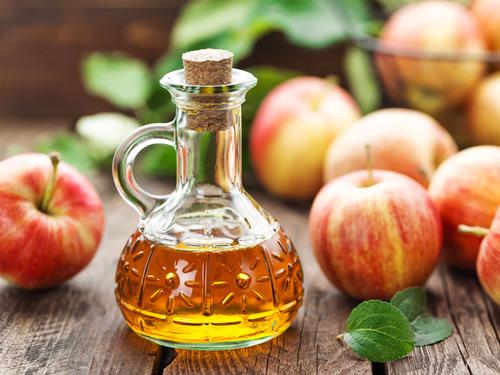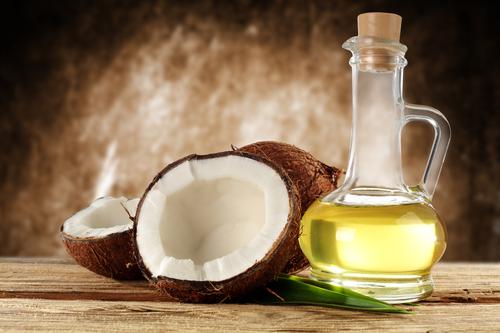Best Ways to Use Apple Cider Vinegar for Yeast Infection
You have probably heard a couple of your friends say apple cider vinegar is a kitchen must-have ingredient. This is because ACV has many different purposes. ACV is used for cleaning, food preservation, disease treatment, and cooking. You may also use apple cider vinegar for yeast infection. The human immune system maintains yeast at a controlled level. However, if the immune system is impacted due to antibiotics, diabetes, cancer drugs, corticosteroids, or having sexual intercourse with a yeast-infected person, candida albicans, the virus that causes a yeast infection, begins to grow uncontrollably.
Symptoms mainly include:
- White patches, red sores, and slight bleeding appear in the mouth.
- Swelling, burning sensation, pain while having sex, and rashes on the genitals.
- Bloating, severe gas production, diarrhea, and intestinal cramps affecting the digestive system.
How to Use Apple Cider Vinegar for Yeast Infection
People living in humid climates are likely to suffer yeast infection. That is why ACV can be a vital home remedy. But pregnant women and people infected with STDs who have suffered yeast infections more than once should not use this home remedy. Always consider a doctor's advice before using any of the methods below.

1. Douche
When using apple cider vinegar for vaginal yeast, a douche is one method to apply. Below is the procedure:
- Add one cup of water in a bowl
- Add three teaspoons of ACV
- Stir the solution and use it to clean the vagina
- Repeat that two times a day
2. Soaking
AVC has properties that help fight yeast fungal infection. This is how it works:
- Dilute about two to three teaspoons of ACV in a bowl
- Soak a cotton swab or a piece of cloth in the solution
- Use that cotton or cloth to swab the yeast affected areas
- You can also place that swab or cloth on the affected area for 15 minutes
- Repeat this as regularly as possible for effective results.
Note: if you feel any burning sensation during the swabbing, dilute the solution more.
3. Diet
ACV can be made part of your diet if you are concerned over a yeast infection. Taking ACV as part of your diet can help to prevent a yeast infection or even fight it at earlier developmental stages. ACV can be sprinkled on salad, potatoes or even added in fruit juices or soup.
4. Bath
Apple cider vinegar for yeast infection can be added to bathing water. All to do is to add about two cups of ACV in warm bathing water. Ensure that you clean and gently scrub those affected areas. If you have a vaginal yeast infection, use that bathing water to clean your vagina. If you really need good results, you can use ACV in bathing water over two days.
5. ACV Tampon
A tampon is used by women as a sanitary product. But if suffering from vaginal yeast infections, tampons can be used to clean the area. Dilute some ACV in a bowl, dip the tampon in the solution, and insert the tampon in the vagina. Let it rest there for 10 minutes and it will help get rid of vaginal yeast. Later, wash the vagina well with clean water and dry the area. Repeat this as needed until positive results are seen.

Other Effective Home Remedies for Yeast Infection
The connection between apple cider vinegar and yeast infection is not the only useful home remedy. There are other handy home remedies which can be used in lieu of over-the-counter drugs. However always consult a doctor before using them.
-
Tea tree oil: A number of scientific reviews done on tea tree oil confirm its ability to cure fungal infections. You can try tea tree oil on your yeast infections too. But make sure you dilute it well, as it can irritate your skin if applied when concentrated. Dilute two to three drops of tea tree oil in about one ounce of warm coconut oil. Then soak a tampon or a cotton swab in the solution and apply it to the affected area.
-
Coconut oil: Coconut oil is harvested from coconut plant. Over the years, it has proven vital for treating yeast infection. If you suffer from mouth yeast infection, all you need to do is to warm a little coconut oil (one to two teaspoons) and swish it around your mouth. For vaginal yeast infection, apply the warm coconut oil using a cloth or a tampon.
-
Boric acid: A 2009 study showed that application of boric acid on yeast-stricken areas can heal the infection. Boric has antiseptic properties that have proven beneficial in getting rid of Candida albicans. But boric acid should be diluted with water and not used on open skin or be taken orally (it can cause circulation issues and kidney damage).
-
Yogurt: Natural yogurt with no added sweeteners, flavor, or any additives introduce beneficial bacteria called probiotics into your body. These contribute to balancing yeast and other body bacteria. That balancing ability is claimed to inhibit yeast growth.
-
Probiotic supplements: As noted above, probiotics help in balancing yeast and bacteria levels in the body. Introduction of oral probiotics, through ingestion, can help restore yeast balance within your digestive tract and vagina.
A yeast infection can cause serious discomfort and irritation. You need to be open-minded since the effectiveness of home remedies depend on the very infection, type of remedy used, and body physiology and morphology. With proper doctor's advice, you can correct the imbalances and treat or prevent yeast infections.
YOU MAY LIKE
-
Best Ways to Use ACV to Treat Warts
-
Top 7 Natural Remedies for Dry Eyes
-
Top 3 Foods to Consume for Stomach Ulcer Treatment at Home
-
The Best Home Remedies for Sore Throat: Get a Relief Now!
-
Massaging the Pressure Points on Your Feet Will Surprise You!
-
Acupressure and Natural Remedies for Treating Headaches
-
7 Most Important Acupressure Points
-
The Best Warts Home Remedy: Tea Tree Oil
-
The Best Guide to Treat an Ear Infection at Home
-
Is Peppermint Tea an Effective Solution to Stomach Ailments?
